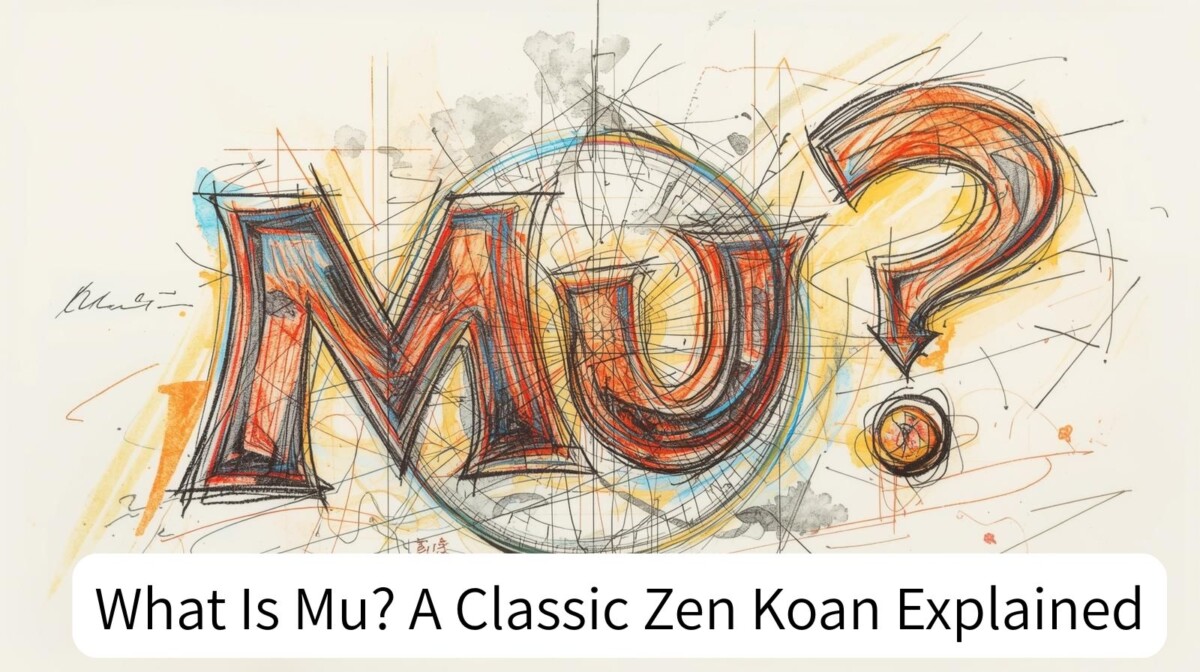
What Is Mu? A Classic Zen Koan Explained
One of the most famous and mysterious Zen koans is just one word: Mu. It appears in countless books, is referenced in Zen training halls, and continues to puzzle — and enlighten — students across centuries.
But what is Mu, really? And why has this one syllable become a cornerstone of Zen teaching?
Let’s explore this classic Zen koan and see what it reveals — not just about Zen, but about how we think.
The koan comes from a traditional dialogue:
A monk asked Master Joshu, “Does a dog have Buddha nature?”
Joshu answered, “Mu.”
In Chinese, Mu (無) means “no,” “not,” or “nothing.” But in the world of Zen, this answer isn’t a simple rejection. It’s not “no” in the binary sense. It’s a challenge — an invitation to go beyond the surface of words and logic.
This koan isn’t asking about dogs. It’s asking about you.
It’s asking: What happens when you let go of intellectual answers?
What is your mind, before it tries to make sense?
Beginners often want to explain Mu — to define it, analyze it, or compare it to similar philosophical ideas. But the power of this classic Zen koan lies in experience, not explanation. The more you try to grasp it with thought, the more it slips through your fingers.
In fact, many Zen teachers assign this koan as a meditation object. Students sit with the question “What is Mu?” for months or even years — not to answer it, but to be transformed by it.
Interestingly, this koan is gaining renewed relevance in the modern world. As conversations about AI consciousness, non-binary logic, and the limits of rational thinking emerge, Mu offers a radical alternative: not yes, not no, but something beyond.
This fits with Zen’s fundamental aim — to free us from habitual thinking. Mu interrupts our automatic responses and demands a different kind of attention. It exposes our dependence on duality: right and wrong, yes and no, self and other.
From a neuroscientific perspective, engaging with paradoxes like Mu may actually strengthen cognitive flexibility — the ability to hold multiple perspectives without immediately resolving them. This aligns with current interest in mental paradox training found in leadership coaching and creativity studies.
So how do you approach Mu?
You don’t try to “solve” it. You sit with it. Breathe with it.
You let Mu sit inside your chest until it burns through every illusion of control.
And eventually — if you’re lucky — Mu stops being a word and becomes a doorway.
What’s behind it? That’s not something to be explained.
It’s something to be lived.
💬 Curious about how koans like Mu can be used in your meditation practice? Visit zen-for-life.com to explore more teachings, stories, and reflections from the Zen path.
🌿 Want to go deeper into Zen and mindful living?
Explore ZEN for LIFE — a gentle guide to bringing presence, simplicity, and calm into your everyday routine.
Now available on Kindle.









この記事へのコメントはありません。